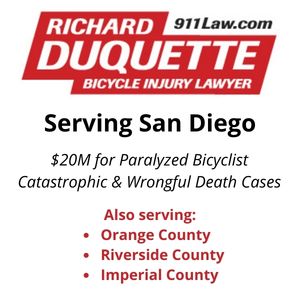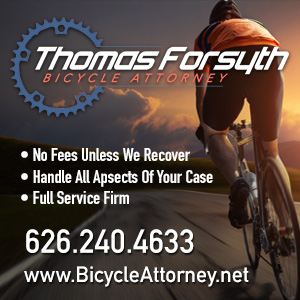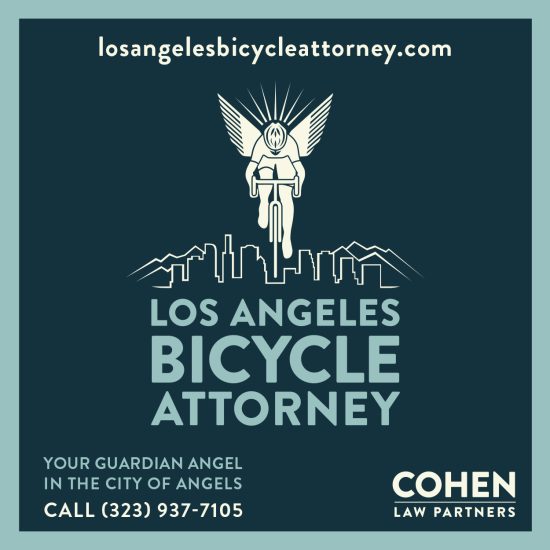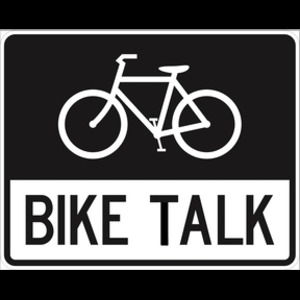The City Council Transportation Committee takes up the Wilshire Blvd Bus Only Lane — aka Bus Rapid Transit or BRT lane — on Wednesday.
Writing for HuffPo, Joel Epstein says a Wilshire without bus lanes is no longer acceptable.
As I’ve stated before, anyone who has taken the 720 bus from the Westside to Downtown knows how desperately this is needed. Not to mention that it will make cycling safer by sharing the new, smooth pavement that would be installed with riders, who are legally allowed to ride in the bus lane.
Wealthy residents of Brentwood and the Westwood’s multi-million dollar Wilshire Corridor are up in arms about allotting a full lane of traffic to a form of transportation they would never lower themselves to use. But traffic-choked Wilshire Blvd is only going to get worse until something is done to get people out of their cars and onto other forms of transportation, making more room for their Bentleys and Beemers.
And it’s not like we’re going to see the long-promised Subway to the Sea anytime soon.
Establishing the BOL for the full 7.7 mile route recommended by Metro is a vital first step in turning around the ever-worsening situation on our streets, as well as ending L.A.’s infamous car culture Councilmember Bill Rosendahl famously proclaimed more than a year ago.
Now it’s time to turn his bold words into real changes on our streets.
……..
Courtesy of Witch on a Bicycle comes this story of a NorCal woman who sees a cyclist riding in a bike lane, in full control of her bike.
Then less than 100 feet after she passes him, watches in her rearview mirror as the rider wobbles, loses control and suffers a severe brain injury in what’s described as a solo bike accident.
Anyone want to guess what’s wrong with this picture?
Yes, it’s possible that it was a total coincidence. The rider, Richard Kadet, could have simply lost control of his bike on a fast descent and fallen all on his own.
Possible, but highly unlikely given the circumstances. Far more likely is that the witness passed too close, causing Kadet’s fall, whether from the effects of the vehicle’s slipstream or over-reaction by a startled rider.
Just more evidence that it’s possible to pass a cyclist safely without passing safely. And that many police still don’t understand what causes bike collisions.
And one more reason why we need a minimum three-foot passing law to let drivers know how close is too close.
……..
The LACBC’s Alexis Lantz joins with William Roschen, President of the L.A. City Planning Commission to discuss L.A.’s new bike plan tonight from 5:30 to 7:30 pm. Naturally, the meeting will take place in Santa Monica, at 2515 Wilshire Blvd.
The same link will also take you to news of Bicycle Kitchen co-founder Jimmy Lizama speaking at UCLA on June 18th from 12:15 to 3 pm, with the intriguing title I am a Bicycle Messenger, My Message is Bicycle. Having heard Lizama speak, this one comes highly recommended.
……..
Former Angeleno and current NYDOT commissioner Janette Sadik-Khan discusses how we can get the most out of our streets. More great photos from last Sunday’s River Ride. An arrest is reportedly near in the Highland Park case of a driver accused of intentionally running down a cyclist; remarkably, the local Patch virtually invites retaliation against the driver by publishing his personalized license plate. Santa Monica finally turns the single line on 11th Street into a real bike lane, and marks spots for future bike racks. KCRW’s Shortcut’s blog keeps up with the latest bike news from the California Bicycle Coalition. Adam Bray-Ali, co-owner of L.A.’s Flying Pigeon Bike Shop, writes about Alhambra city codes that can discourage cycling.
The much improved KCET website looks at the new Long Beach Bicycle Business Districts, and suggests a similar approach for L.A.’s 7th Street. Inland area bike groups teach repair techniques to encourage new riders. A funeral will be held today for Nick Venuto, the cyclist killed when a car flipped onto an off-road bike path in San Diego last week. A 25-year old man was found dead on the campus of UC Santa Cruz lying 15 feet from a bicycle, the apparent victim of a hit-and-run. One of the joys of riding is exploring new areas. Cyclelicious discusses how to make a fast stop without pulling an endo; my technique has always been to squeeze the rear brake a fraction of a second before pulling the front, with a little practice it becomes second nature.
Bike touring can benefit local economies. The Vet Hunters will ride 1900 miles in a search to help homeless veterans. Making a movie about riding a ’67 Schwinn across country wearing a tux. River Ride was great, but it didn’t offer fresh bacon on the bikepath. CNN looks at how early bikes meant freedom for women. What’s your best excuse not to commute by bike? Bicycling offers advice on how to get your kids started with cycling. An Oregon man banned from driving argues that an electric bike is not a car; does it help or hurt his case now that Hertz is renting them? Thankfully, the 7-year old Alaska girl severely beaten when she refused to give up her bike is expected to make a full recovery. My bike-friendly hometown gets its first bike box. The Bozeman, MT newspaper says get a bike and use it, you’ll be glad you did. Chicago riders get a warning to obey traffic laws. The former Ugly Betty bikes the Big Apple. The trip leader of a national Bike and Build group was killed while riding in Alabama; this is the second fatality to strike the group in less than a year.
Bike Radar offers 10 tips to make your road bike faster. Should bicycling and running events be moved off city streets to accommodate motorists horribly inconvenienced on one or two days a year? Your next bike helmet could be made of cardboard. London Cyclist asks if one bike is enough, or is enough never enough? London’s Torries walk about to avoid voting on a proposal to protect cyclists and pedestrians. International transportation leaders say it’s time to take cycling seriously. Riccardo Ricco is once again banned from competitive cycling, just days after being reinstated.
Finally, apparently having learned absolutely nothing from last year’s Tony Kornheiser fiasco, ESPN once again allows a pair of their radio ranters to ride off the rails with a 20-minute long discussion of how much fun it would be to door cyclists. Maybe it’s time to let Disney — ESPN’s parent company — know that we don’t want their employees encouraging people to kill or injure people on bikes.
Then again, idiotic shock jocks aren’t just an American phenomenon







